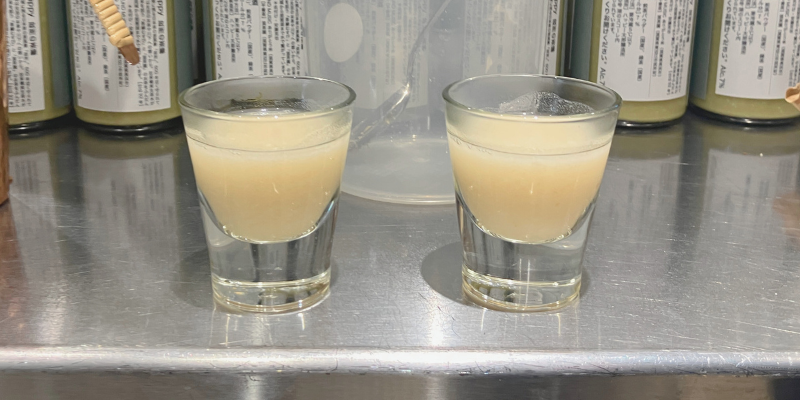What is Japanese Sake?
Japanese sake, also known as nihonshu or simply sake, is a traditional fermented alcoholic beverage made from rice. Widely enjoyed in Japan, this brewed beverage typically has an alcohol content of 15-17%. With over 1,200 sake breweries in Japan producing more than 6,000 different sake brands, sake showcases a rich diversity and cultural significance.
Legal Definition of Sake
The legal definition of Japanese sake is outlined in Japan's "Liquor Tax Laws," managed by the Japanese Tax Agency. According to Article 2, Paragraph 1 of these laws, alcoholic beverages are defined as those with an alcohol content of 1% or more. Japanese law categorizes alcoholic beverages into three types:
- Brewed alcohol: Japanese sake, beer, and wine
- Distilled alcohol: Shochu, awamori, whiskey, brandy, vodka, gin, and rum
- Mixed alcohol: Mirin, liquor, vermouth, and synthetic mixed sake
Within this framework, Japanese sake is classified as brewed alcohol and is defined as follows:
- Fermented and strained (filtered or pressed) from rice, rice koji, and water.
- Fermented and strained (filtered or pressed) from rice, rice koji, water, and sake or other specified ingredients, provided these additional ingredients do not exceed 50% of the rice's weight.
- Sake made by adding sake lees to sake and then straining.
In essence, Japanese sake must be made with rice, rice malt (koji), and water, with the optional addition of distilled alcohol and other components in small amounts. The brewing process includes straining to separate the sake lees from the liquid sake. If these conditions are not met, the beverage cannot be classified as sake, and a different alcohol manufacturing license is required. Only sake can be brewed under the sake license ("清酒免許").
Interestingly, even if a beverage is made with 100% rice koji, it is not legally considered Japanese sake if no pure rice is used. Some craft sake breweries take advantage of this distinction. Since new sake licenses are not issued, younger entrants often obtain the "other brewed beverage" license ("その他醸造酒免許") to produce similar beverages.
What is Japanese Sake Called?

In Japanese, sake is referred to as “日本酒” (Nihonshu). You might also encounter the term “清酒” (Seishu) on sake labels, which is the official designation for Japanese sake. Additionally, the term “地酒” (Jizake) is used to describe regional sake products, translating to regional alcohol.
It's important to note that “酒” (Sake) in Japanese means all types of alcohol. While in English, "sake" specifically refers to Japanese rice wine, using just “sake” in Japanese can lead to confusion, as it denotes alcohol in general.
In English, an alternative term for Japanese sake is "Japanese rice wine," highlighting its nature as a fermented alcoholic beverage similar to wine, but made with rice as the primary ingredient.
Another term that is sometimes used is “和酒” (Washu), where the “和” stands for Japanese things in general, basically translating to Japanese sake. Further, “国酒” (Kokushu) is yet another term that collectively describes Japanese sake, shochu, and Okinawa’s awamori.
Difference Between Seishu (清酒) and Nihonshu (日本酒)
"Seishu" (清酒) is the legal term that encompasses all sake as legally defined. In contrast, "Nihonshu" (日本酒) refers specifically to sake brewed in Japan using Japanese rice. Therefore, if a brewery uses imported rice, such as rice from California, the product cannot be labeled as "Nihonshu."
Japanese sake is protected as a geographical indication under the "Labeling Standards for Geographical Indications of Alcoholic Beverages" (National Tax Agency Notification No. 19, October 2015), based on the "Liquor Industry Association Law" (Law No. 7, 1953).
Can Sake Be Made Outside of Japan?

We often get asked if sake can be made outside of Japan. The answer is yes, Japanese sake can indeed be produced in other countries. In fact, some of the sake sold internationally is not imported from Japan but is made locally. Notably, several large Japanese sake breweries have established factories in countries like the United States or Canada.
Although alcohol laws and regulations vary by country, sake is generally not legally defined outside Japan, allowing for considerable flexibility in production. However, this freedom comes with challenges. Producing sake abroad often faces obstacles such as the lack of specialized machinery, brewing equipment, and essential ingredients like yeast, koji, and sake rice.
Conclusion
Understanding the legal definition of Japanese sake helps in appreciating its authenticity and cultural significance. Japanese sake, or nihonshu, is a traditional beverage made from rice, rice malt (koji), and water, subject to strict brewing processes. The legal distinctions ensure that only beverages meeting these criteria are classified as sake, preserving its heritage.
Additionally, while sake can be made outside of Japan, producing authentic Japanese sake abroad comes with unique challenges. This exploration highlights the importance of maintaining traditional practices to preserve the quality and essence of Japanese sake.







